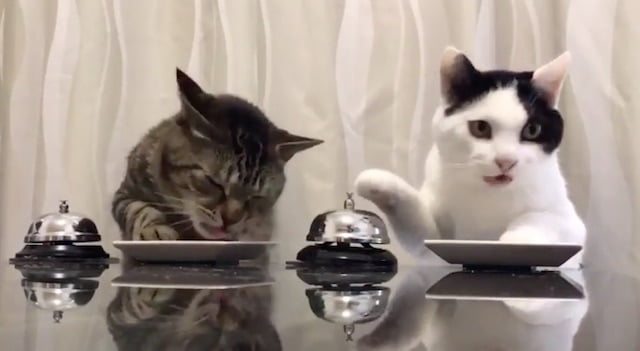We know that the best form of cat training is positive reinforcement which entails the use of a reward. A clicker is sometimes used to connect the request delivered by the owner and the reward. Often this sort of training is entirely informal. This is a short note about how a cat will continue to carry out what they have been informally trained to do without wanting the reward at the end of that activity.

I’ve learned this from personal experience and I think it is worth passing on as an observation. I’ve mentioned it before but when I come back from buying the newspaper in the early morning my cat wants his prawns. This is his treat. And I give him what he wants. And when you do that for a while a routine is set up. It becomes a habit. Both cat and person are trained. The person has trained themselves and the cat has reinforced that training by requesting the treat. It’s a combined effort; let’s call it mutual-training.
This morning the same thing happened, but like many other mornings when I give him his prawns, he was not bothered. He didn’t want them. He thinks he wants them, or he goes through the motions of asking for them, because of his training. When the moment comes to eat, he realises he does not actually want them. He no longer wants the reward
In this instance the purpose of this mutual training is not to do something which pleases me but the point of the discussion is that you can train a cat to do something in the long term with the reward being removed. Of course, the reward has to be there during the initial training but it can then be removed. Your cat will still do the activity when it is initiated in the same way.
In my example this activity is initiated by me coming home and opening the front door and going into the kitchen. But there could be any number of initiating words or activities which trigger the same response in a cat.
SOME MORE ON TRAINING:

